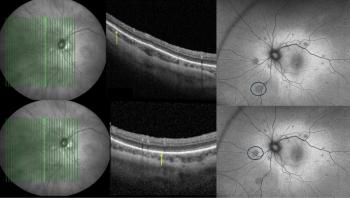
Adapting to darkness
Scientists studying a neural retina in a salamander have found Müller cells in the promoted cone-specific pigment regeneration and dark adaptation that are independent of the pigment epithelium.
Scientists studying a neural retina in a salamander found Müller cells in the promoted cone-specific pigment regeneration and dark adaptation that are independent of the pigment epithelium.
Similar to glial cells in the brain Müller cells in the retina support and interact with photoreceptors. The researchers removed the pigment epithelium layer preventing the pigment molecules from recycling using a known pathway. They then exposed the retina to bright light then darkness and found that the cones continued to function, making it clear that a second pathway was being employed.
Their discovery will enhance our understanding of human diseases affecting the retina, including age-related macular degeneration (AMD). The researchers results are published in the March issue of Nature Neuroscience.
Principal investigator Vladimir J. Kefalov, PhD, assistant professor of ophthalmology and visual sciences at Washington University School of Medicine believes that there are major implications for AMD, where cone cells malfunction over time. This would take the form of targeting the pathway, revving up its activity and supplementing or rescuing the function of the cones.
Before that happens, he says it will be important to figure out exactly how the Müller cells are interacting with photoreceptors. Although these studies confirmed the existence of the second photoreceptor pathway, they didn't reveal how it works. Kefalov's laboratory has recently received a five-year, $1.9 million National Eye Institute grant to study how this newly identified visual pathway functions in the retina.
Newsletter
Get the essential updates shaping the future of pharma manufacturing and compliance—subscribe today to Pharmaceutical Technology and never miss a breakthrough.













































